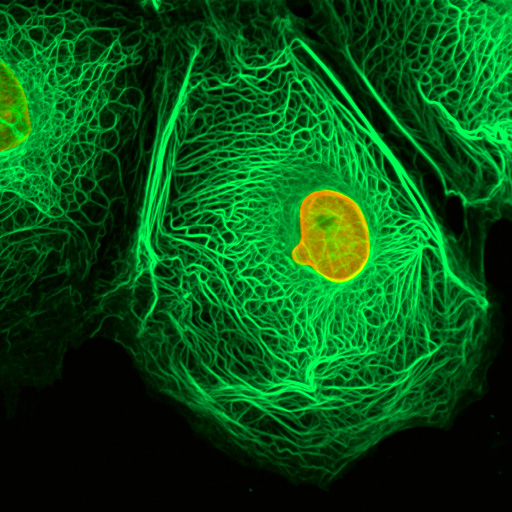What allows certain cancer cells to survive the onslaught of chemotherapy drugs? Is it possible to target new drugs to their weak points?

In cases where chemotherapy drugs fail to destroy the cancerous tumor down to the last cell, the cancer can take advantage of the open crack and sneak back into the body - making it even more difficult to cure. At first glance, it is impossible to distinguish between the cancer cells that are destroyed by the drugs, and the few cells that are able to deal with them, survive, and thus endanger the patient's life.
Research students Ariel Cohen, Naama Geva-Zatorski and Eran Aden from Prof. Uri Alon's research group in the Department of Molecular Biology of the Cell, decided to try and identify the differences between the cells affected by the drugs, and the cells resistant to them. To do this they needed a tool that allows a very broad search, a scan of the vast variety of proteins present in the cell; which is also sensitive enough to distinguish the details of the activities taking place in individual cancer cells. The team members, who brought with them their expertise and experience in various scientific fields - from cell biology to computer systems - were helped by additional experts from their department, in the field of microscopic imaging and other fields. Together they succeeded in developing a unique method for imaging hundreds of thousands of living cells, and for computerized analysis of their activity.
At the beginning of the research, the scientists were looking for a way to find the borders of the cells as well as distinguish between different areas within the cell. To this end, they inserted two fluorescent genes into the genome of the cancer cells: one gene that colors the protein whose role and mode of activity they wanted to investigate, and another gene that colors the cell nuclei and their outlines. This method made it possible to task the computer with identifying the organization and dynamics of the proteins being studied in normal cells, and the deviations from this behavior in cancer cells - in the presence and absence of chemotherapy drugs. The new computerized imaging and analysis method was able to track the movement of the proteins, and detect changes in their location within the cell over time.
Despite the efficiency of the computerized process, it took the team several years of work to complete the research, during which they scanned the activity of more than a thousand proteins. Each protein was labeled in cancer cells, and photographed for 72 hours, at short time intervals. After the first 24 hours, the researchers added a chemotherapy drug, and monitored the cancer cell's response. The results of the experiments yielded a rich library that includes labeled cancer cells, videos, simulations and data on the behavior of proteins in individual cells - a valuable treasure that will serve as a basis for future cancer research. In addition, the researchers located two suspicious proteins, which seem to be related to the ability of cancer cells to survive "under fire" from chemotherapy.
The scientists discovered that while most proteins behave similarly in all cell types, a small group of them - about five percent - behave inconsistently and unexpectedly. Differences in the behavior of the proteins were found even in the same cells and when exposed to the same drug. These proteins, which have the double occurrence, received the nickname "bimodal proteins".
Later, the scientists checked whether it is possible that among the bimodal proteins there are some that help the survival of the cancer cells. They found two such proteins. One of them, called DDX5, is a multipurpose protein that is responsible, among other things, for driving the production of several other proteins. The second protein, RFC1, also plays diverse roles in the cell, and among other things is involved in repairing damage to the genetic material. When the researchers blocked the production of these two proteins in the cancer cells, the effectiveness of the chemotherapy drug improved considerably.
Research student Ariel Cohen: "This method gives us significant insights into the mechanisms by which cancer cells respond to chemotherapy treatment. We were able to identify possible new targets for future drugs, and we also discovered measures that may improve the effectiveness of the drugs that exist today."

4 תגובות
http://www.sciencemag.org/cgi/content/full/322/5907/1511
sensational new
Can I have a reference to the article?
strong !